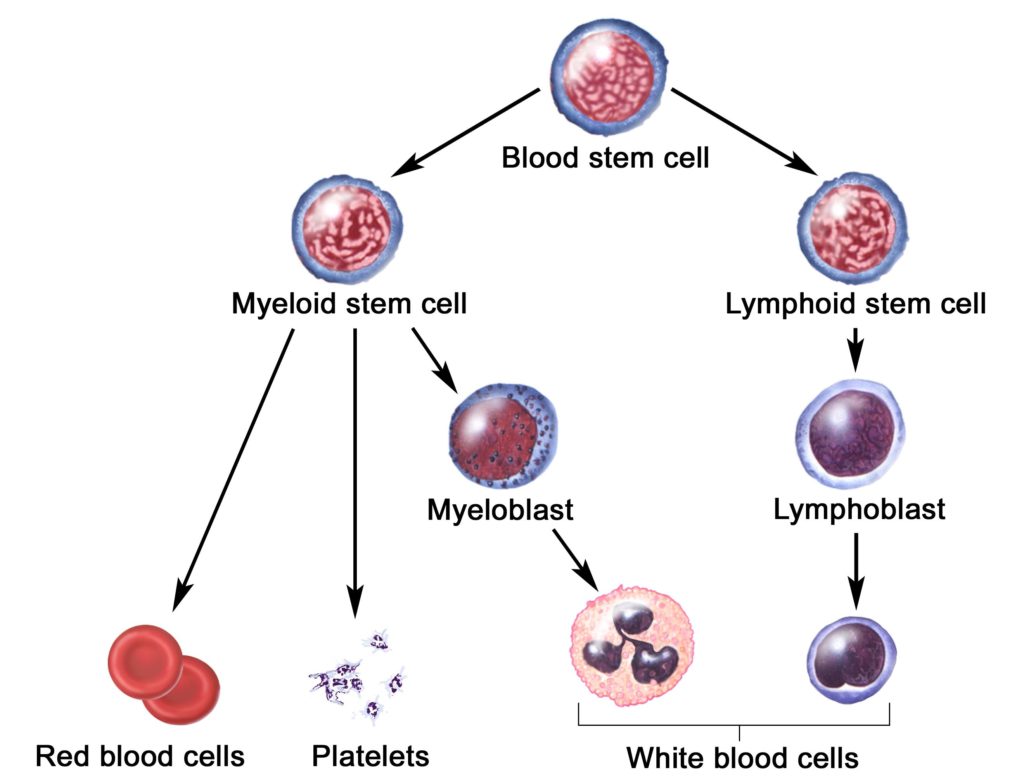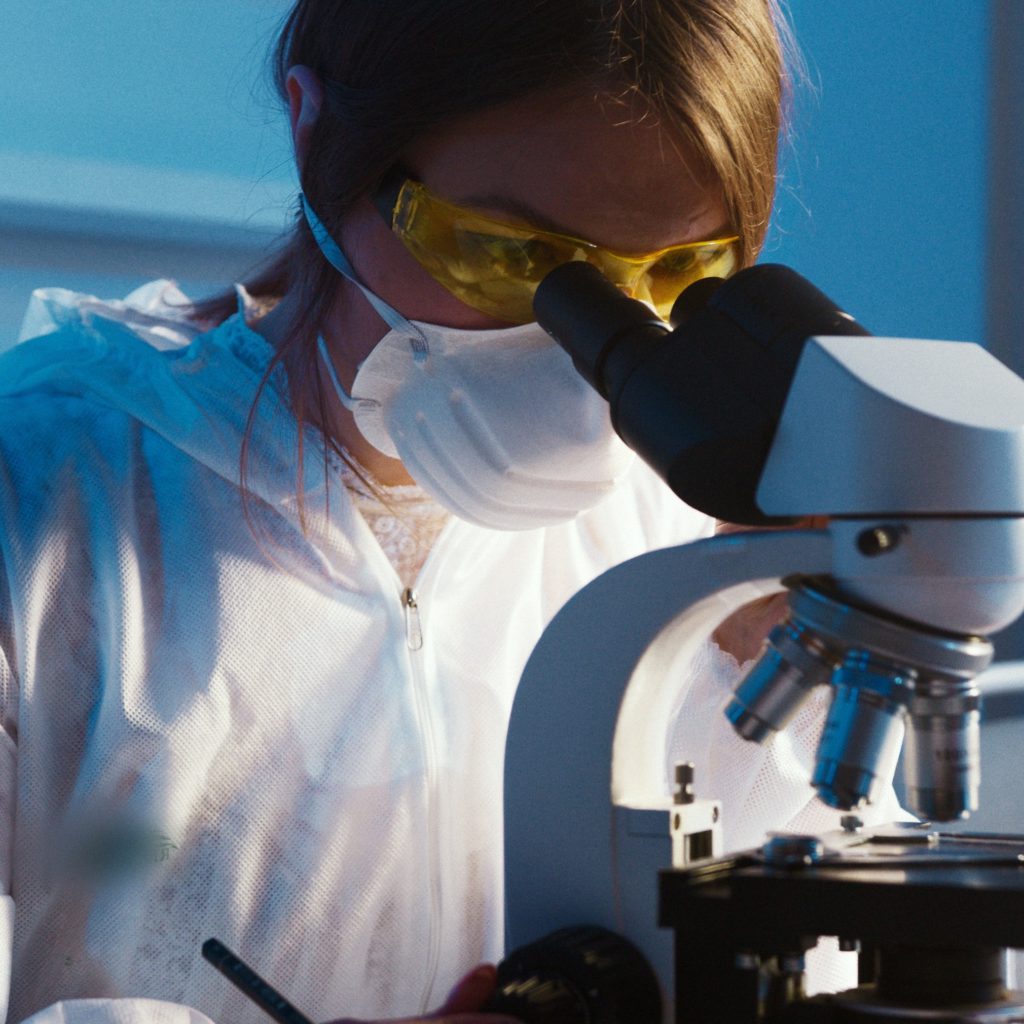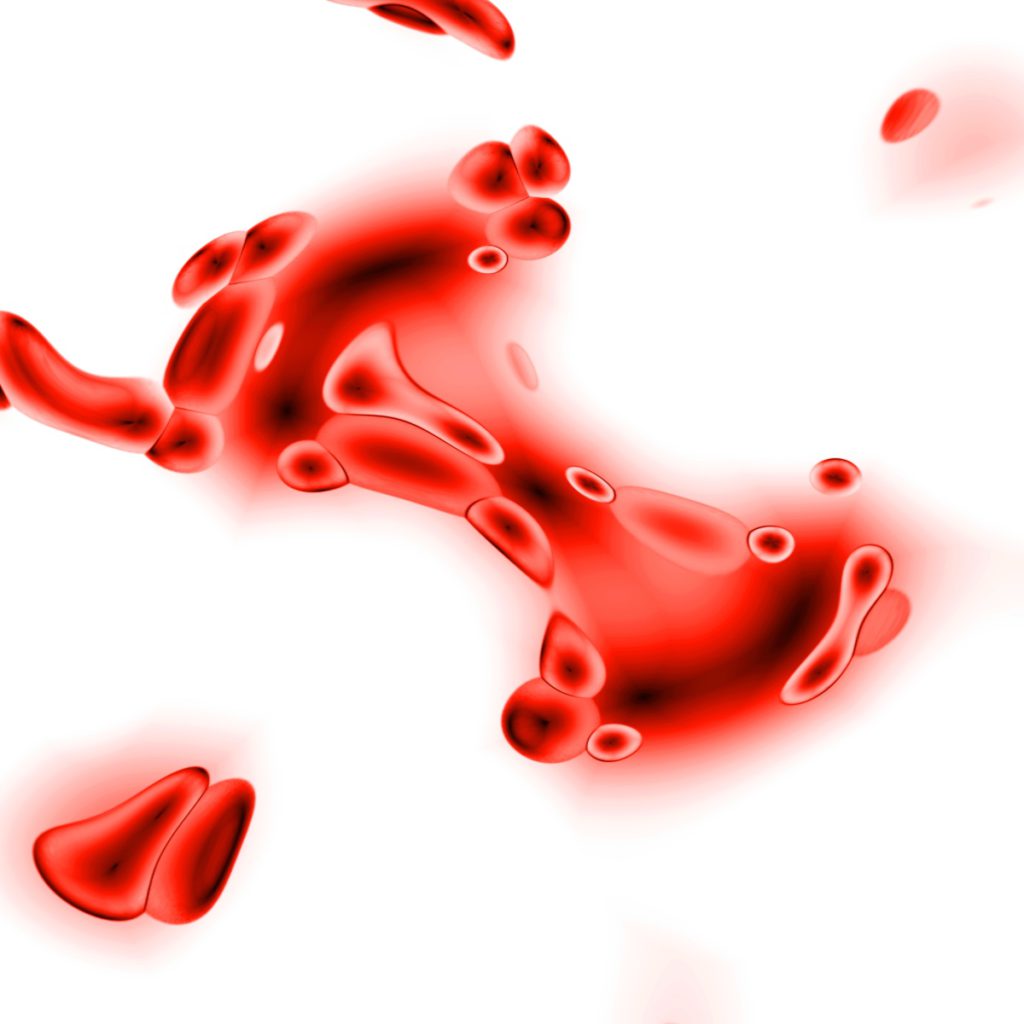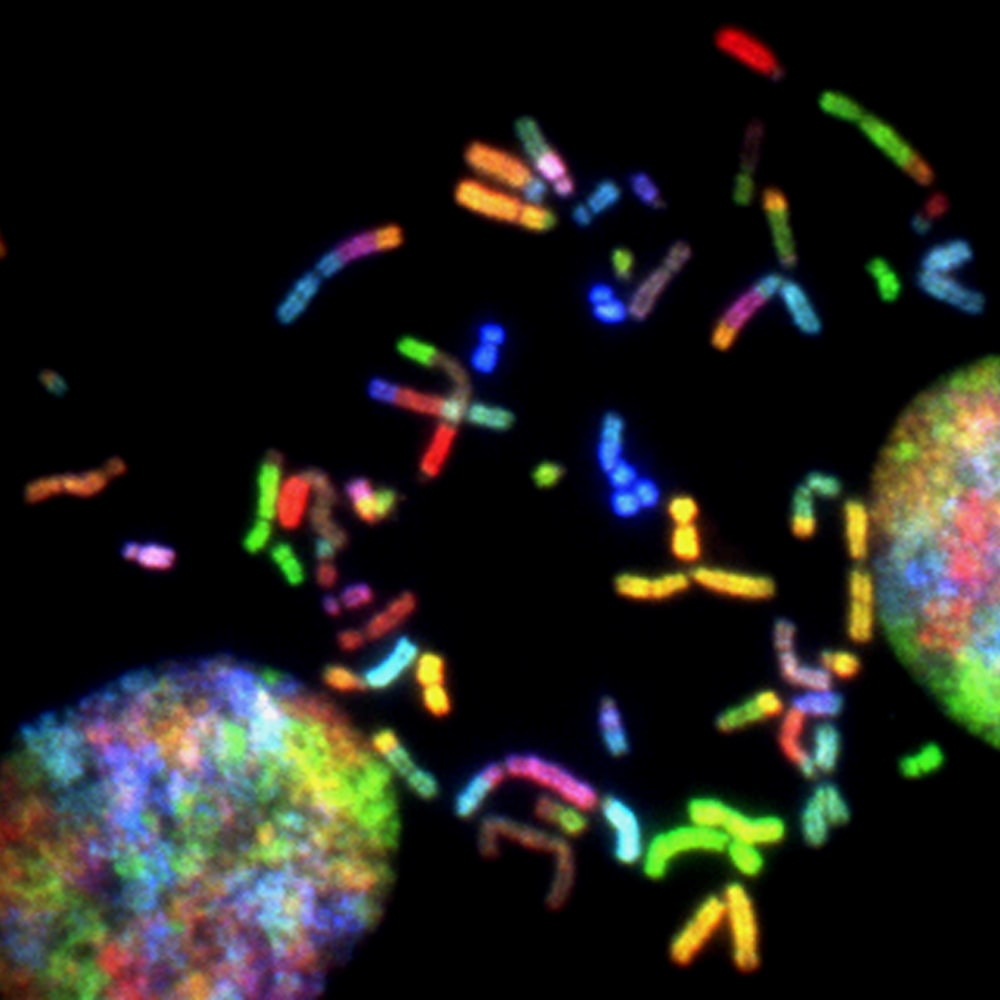Polycythemia Vera Symptoms & Causes
Approximately 95% of patients diagnosed with polycythemia vera (PV) have a mutation of the JAK2 gene. Those patients diagnosed with PV often experience mild to no symptoms.
This article looks deeper into polycythemia vera symptoms and causes, including how the mutated JAK2 gene impacts the body and some of the more severe complications resulting from PV.
- What Causes Polycythemia Vera?
- Quick Reference
- How are Blood Cells Made?
- How is the JAK2 Gene Involved in Blood Production?
- Can You Have Polycythemia Vera Without a JAK2 Mutation?
- What are the Symptoms of Polycythemia Vera?
- What are the Complications of Polycythemia Vera?
- When Should I See a Doctor?
- Learn More About Polycythemia Vera
What Causes Polycythemia Vera?
Polycythemia vera (PV) occurs when a single hematopoietic stem cell within your bone marrow has a malignant change. The cause of this malignant change is unknown, but researchers believe PV is acquired and not hereditary.
Quick Reference
Doctors and experts use specific terms that individuals without a background in science or knowledge of polycythemia vera may be unfamiliar with. Therefore, we’ve provided a few commonly referenced words below to use throughout this article as a quick reference guide.
Bone Marrow – Soft, spongy material found inside your bone. Bone marrow is where the majority of blood cell production occurs.
Erythropoietin – A hormone produced by the kidney that activates the JAK2 gene.
Hematopoietic stem cell – An immature cell that can develop into any type of blood cell.
Haemopoiesis – The process of blood cell production.
JAK2 – Stands for Janus kinase 2. A gene that produces a protein called kinase a powerful driver of cell growth. Most people with PV have a mutation of the JAK2 gene.
Lymphoblasts – Progenitor cells that develop into T-cells and B-cells.
Myeloblasts – Progenitor cells that develop into red blood cells, some types of white blood cells, and platelets.
Progenitor cells – The precursor cells to fully mature blood cells. In between hematopoietic cells and mature blood cells in hemopoiesis.
Splenomegaly – An enlarged spleen.
How are Blood Cells Made?
To understand the cause of polycythemia vera, you must understand the process of blood cell production. It’s best to think of hemopoiesis, the process of making blood cells, like a family tree.
The youngest or most immature blood cells (hematopoietic cells) sit at the top of the tree. These cells divide to make copies of the cells and can develop into progenitor cells.
Progenitor cells are the precursor cells to fully mature blood cells. There are two different types of progenitor cells:
- Myeloid stem cells (myeloblasts) – stem cells that develop into red blood cells, some types of white blood cells, and platelets. Platelets form from megakaryocytes, which are part of the myeloid stem cell tree.
- Lymphoid stem cells (lymphoblasts) – develop into T-cells and B-cells.
The progenitor cells ultimately come to form the fully developed red blood cells, white blood cells, and platelets. This entire process takes about two days, with your body producing approximately 2 million new cells every second.

How is the JAK2 Gene Involved in Blood Production?
You may wonder what the JAK2 gene’s role in all of this? The kidneys typically produce a hormone called erythropoietin that activates the JAK2 gene to create more blood cells.
However, those with PV often have a mutated JAK2 gene. When the JAK2 gene has a mutation, it remains active even in the absence of erythropoietin. As a result, the mutated cells continuously divide, ultimately becoming the predominant hemopoietic cell. This, in turn, is what eventually causes polycythemia vera.
Can You Have Polycythemia Vera Without a JAK2 Mutation?
According to the MPN research foundation, approximately 95% of people diagnosed with PV have the JAK2 mutation. However, it is possible to have PV without testing positive for the JAK2 mutation. Unfortunately, the research is very sparse regarding other causes of PV.
Learn more about PV including the difference between primary PV and secondary PV by checking out our polycythemia overview page.
What are the Symptoms of Polycythemia Vera?
Several people with polycythemia vera don’t have any symptoms at all. If they do experience symptoms, they are often vague, like having a headache or dizziness.
When individuals with polycythemia vera do experience symptoms, some of the more specific ones include:
- Itchiness which is especially noticeable after a bath or shower
- Numbness, tingling or burning in the arms, hands, or legs.
- Pain or bloating in the left upper abdomen
- Unusual bleeding
- Frequent nosebleeds or bleeding from the gums
- Painful joint swelling, typically the big toe
- Shortness of breath while lying down caused by low-oxygen levels
It’s essential to pay attention to the potential signs or symptoms of polycythemia vera, as catching symptoms early can help doctors develop a treatment plan before the disease becomes more serious.

The hope is that we screen early, prevent early, and in the future, we don’t even diagnose…The goal is to always prevent it early.
– Dr. Irene Ghobrial | Read more about the Importance of early detection.
What are the Complications of Polycythemia Vera?
An atypical increase in blood cells can lead to several different complications. While the following complications are not solely linked to PV, they can occur as a result of the disease.
Blood Clots (Thrombosis)
The increase and the abnormality of the blood cells produced with PV can put those with the disease at a higher risk for blood clots. Those over 60 who have been diagnosed with PV are at the greatest risk.
To ensure that your red blood cell volume is effectively managed, you should track your hematocrit level or the measure of red blood cells in your body. According to the American Red Cross, normal levels of hematocrit include:
- 41% to 50% for men
- 36% to 48% for women
Anything above the normal levels needs to be managed by phlebotomy or medications.
“Thrombosis is a blood clot. We want to manage the patients for their thrombotic risk. What is the risk of having a blood clot? So we divide the patients into those that are the low risk for a blood clot, and in those patients, we just do phlebotomy.”
Dr. Srdan Verstovsek | Read more about managing risk of thrombosis.
“So we know that the control of the hematocrit or the percent of blood by volume that are red blood cells is important to achieve to decrease the risk [of thrombosis]. “
Dr. Ruben Mesa | Read more about using medication to control the risk of thrombosis.
Enlargement of the Spleen (Splenomegaly)
According to Voices of MPN, between 30% and 40% of patients with polycythemia vera have an enlarged spleen.
Your spleen aids your body in filtering unwanted material like old or damaged blood cells. A patient with PV often has an overworked spleen, causing it to become enlarged. Common symptoms of splenomegaly include:
- Pain in your upper left abdomen
- Feeling full after eating little to nothing
An unhealthy or enlarged spleen can increase the risk of infection and several other complications. Therefore, if you are experiencing splenomegaly symptoms, it’s essential to tell your doctor about it.

Learn more about polycythemia vera diagnosis & treatments including which diagnostic tests are run and how treatments vary based on exhibited symptoms.
Gout
Gout is a form of arthritis that occurs when uric acid builds up in your joints. The high turnover of blood cells that occurs in a patient with PV often results in high levels of uric acid being left in the body.
Gout results in the pain and swelling of joints. It is particularly common in your big toe.
Other Blood Disorders
In rare cases, polycythemia vera can evolve into other blood disorders like myelofibrosis or leukemia.
PV evolves into myelofibrosis when your bone marrow becomes filled with an abundance of scar tissue after years of overproducing blood cells that it can’t produce enough blood cells to meet your body’s needs.
Even more rarely, the abnormal blood cells can grow so out of control that it leads to acute myelogenous leukemia, a cancer of the blood and bone marrow.
Myelofibrosis is a rare cancer of the bone marrow. Learn more about myleofibrosis symptoms, diagnosis, treatment and more.
When Should I See a Doctor?
If you are experiencing any of the symptoms or complications associated with polycythemia vera, it is crucial that you schedule a visit with your doctor. While in most cases, the symptoms turn out to be linked to some other cause, catching polycythemia vera early and continuously monitoring it helps prevent the disease from becoming more serious.




